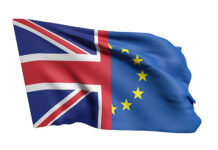Hike ‘does not represent a reassessment of the economic outlook’
The overall message from the meeting was that the Fed is on track and delivered one of the three hikes it projected back in December 2016 – the Fed has not become more hawkish. This was in line with our expectation, see also FOMC preview.
In her opening remark, Fed Chair Yellen said that the decision to hike ‘does not represent a reassessment of the economic outlook’ but reflects the ‘continued progress toward’ full employment and 2% inflation.
Yellen also noted that the median ‘dots’ were ‘essentially unchanged’ from the last projections in December (see slide 4). The dots still signal three hikes in both 2017 and 2018. It is worth keeping in mind that the Fed is data dependent and will not hike unless data support the case, which it showed last year.
There were no major changes to the FOMC statement. The most important change was that it stated the inflation goal is ‘symmetric’, which we interpret that the Fed still wants inflation to move higher and does not mind if it overshoots the target a bit (although not persistently).
Yellen repeated that she estimates the current level of the real Fed funds rate is around 0%, meaning that a total of four hikes would be one too many this year, as it would make monetary policy neutral instead of accommodative. She expects it to move to 1% in coming years (3% nominal).
We expect the Fed to hike twice more this year (July and December) and three-four times next year. We expect the Fed to begin the reduction of its balance sheet in Q1 18 (see also slide 5).
Fed still awaits more information about ‘Trumponomics’ and previous meetings have revealed that ‘almost all’ FOMC members think there are upside risks to growth due to the expectations of more expansionary fiscal policy.
Perhaps we will get more information tomorrow when Trump’s budget proposal for fiscal year 2018 is expected to be published. Note that the US debt limit suspension expires today, see also Research US: Debt limit suspension expires
Markets were positioned for a more hawkish Fed
EUR/USD bounced on the announcement
As some expected a more hawkish stance from the Fed, we saw a repricing of the Fed after the meeting, as the Fed did not raise the median dots for this year and next year, still signalling three rate hikes in both. Markets now price 1.6 hikes for the rest of this year and a total of 3.6 hikes before year-end 2018 (versus 1.7 and 3.9 yesterday).
EUR/USD bounced on the Fed announcement and the exit poll from the Dutch election showing PM Rutte’sVVD becomes the biggest largest party (31 seats versus 19 seats to Wilder’s Freedom Party). Technically, short-term momentum indicators for EUR/USD are turning bullish and we could see a near-term move to the upper end of the recent 1.0350-1.0850 range.
We view that relative rates are slightly EUR/USD bearish, as the market has turned too hawkish on the ECB pricing in a 10bp rate hike by March 2018, while the Fed is slightly underpriced.
However, other factors such as valuation and the record-high eurozone-US current account differential are clearly EUR/USD bullish.
Hence, EUR/USD is in our view currently forming a base and we expect a gradual move higher later in the year forecasting the cross at 1.12 in 12 months.

Fed maintained ‘dot’ signal at three hikes per year


The Fed discussed ‘eventual change to reinvestment policy’
Weexpect quantitative tightening to begin in Q1 18
FOMC members have become more vocal on their desire to reduce the Fed’s balance sheet in recent months and Yellen said in her opening statement that the Fed discussed ‘a number of issues related to an eventual change to our reinvestment policy’, which means we have to look out for this in the minutes.
In the statement, the Fed maintained its current strategy that it will continue to reinvest until the normalisation of the Fed funds rate is ‘well under way’, which seems to be when it is around 1.50% (half of the Fed’s estimated neutral rate at 3.00%), although Yellen said that it was a more ‘qualitative’ statement than ‘quantitative’.
We think the Fed will begin the reduction in Q1 18. An NY Fed survey shows that primary dealers expect it to begin a bit later in mid-2018.
Read also Research US: Fed’s regulatory hurdle for starting quantitative tightening, 13 March













